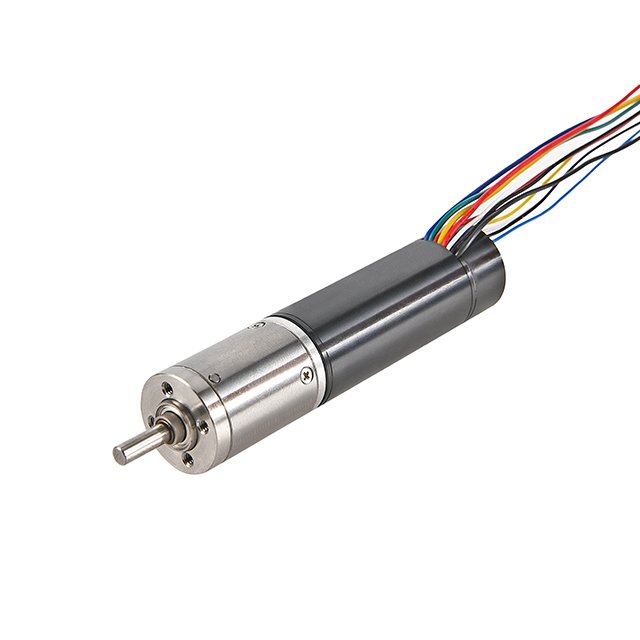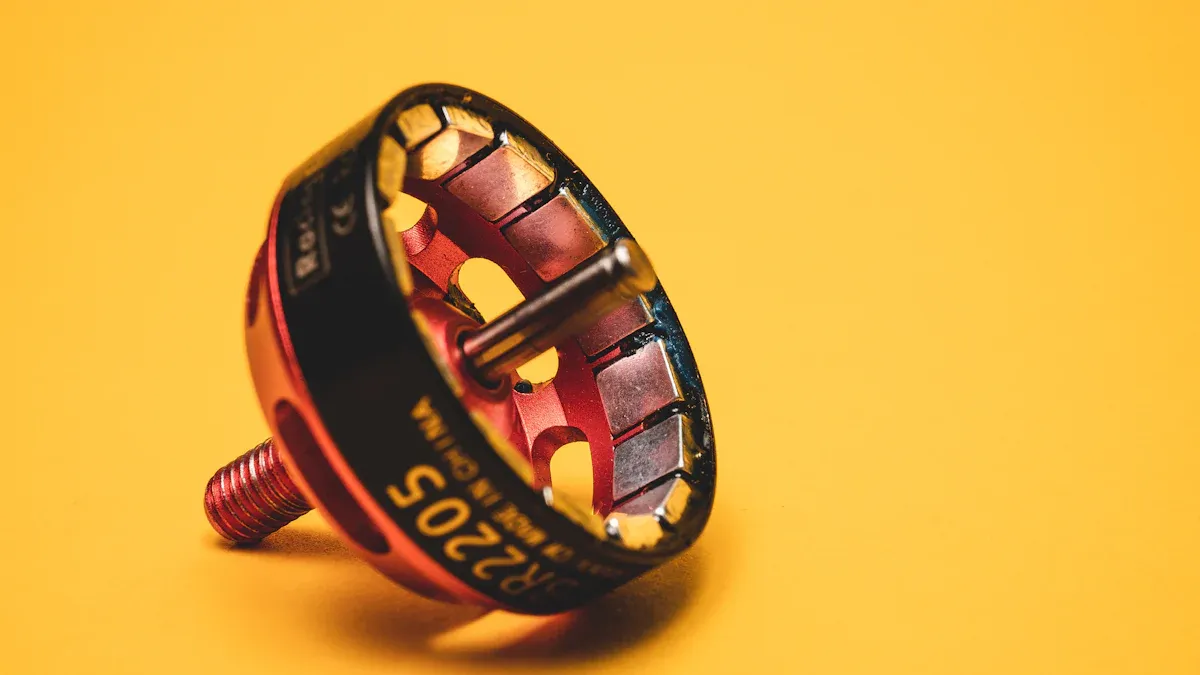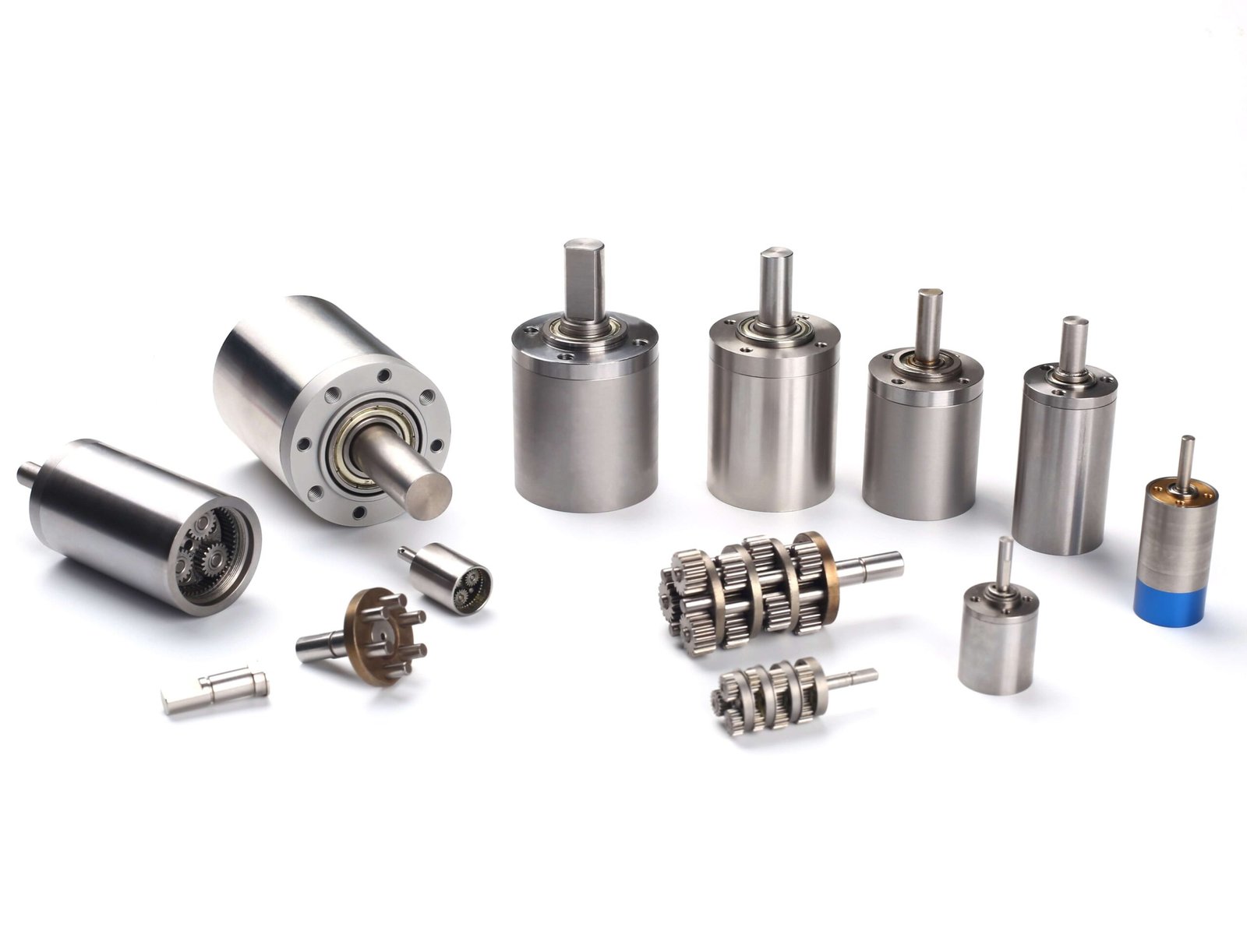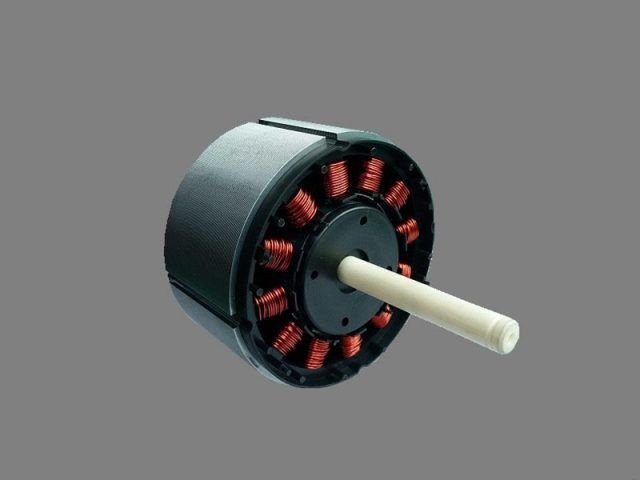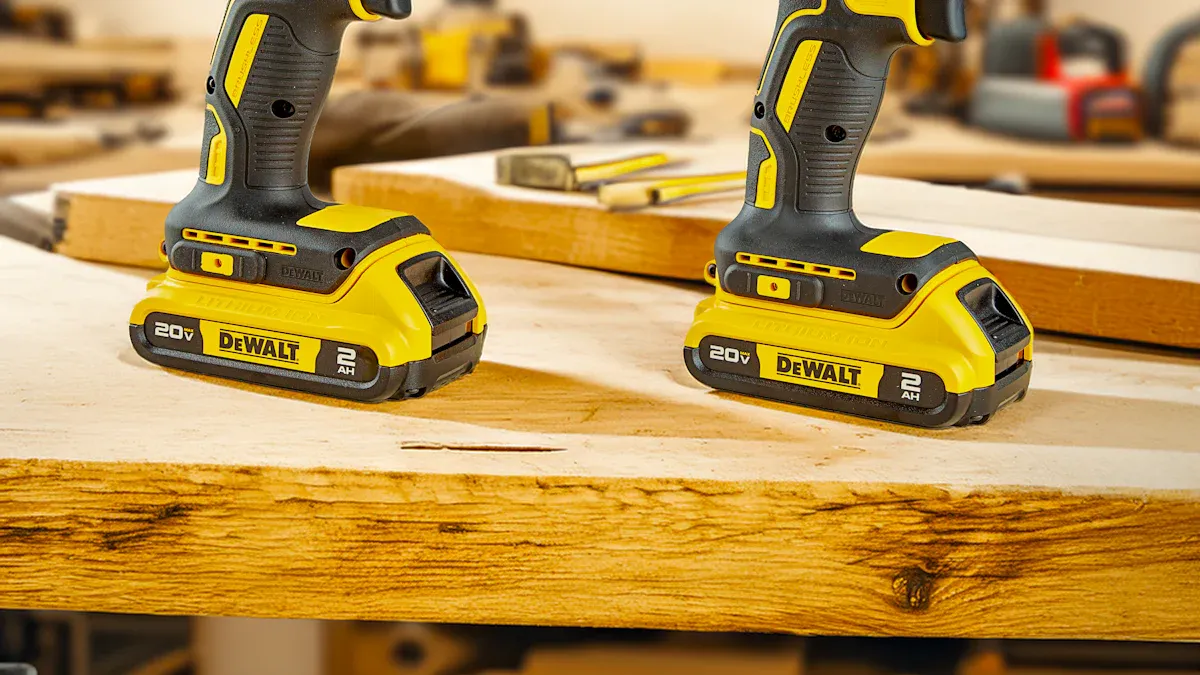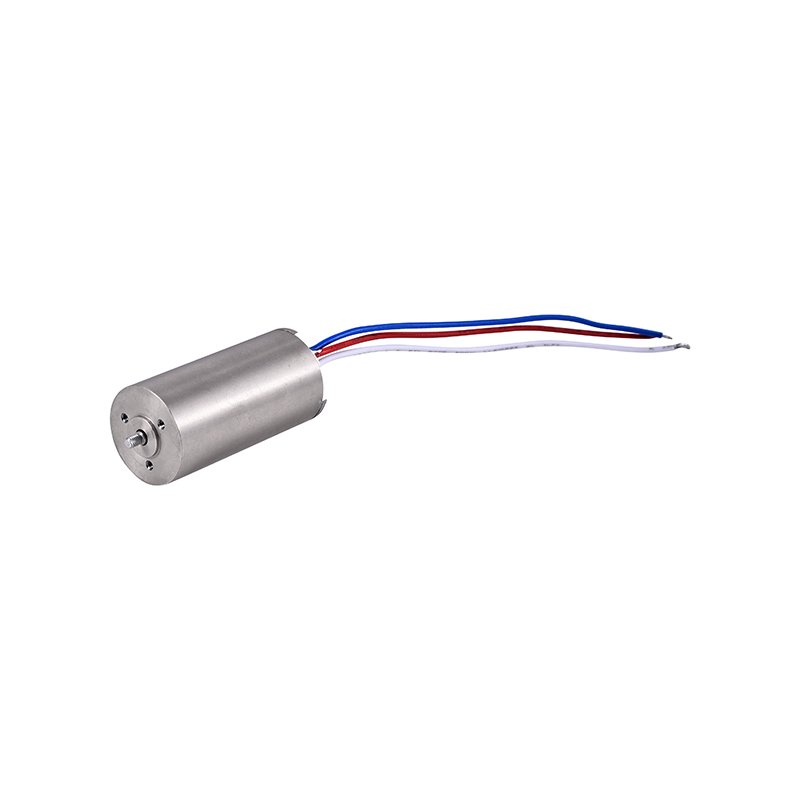A brushless DC gear motor uses an electronic controller. This helps control speed and torque very well. The motor has a brushless DC motor and a gear system. The gear system makes the motor slower but stronger. This helps with hard jobs. Brushless motors do not have brushes. This means there is less friction and less wearing out. New studies show these motors need almost no care. They can work for tens of thousands of hours. Factories like brushless DC gear motors. They do not stop working often. The closed design keeps out dust and water. This makes the motor reliable and good for careful control.
Aspecto | Motores con escobillas | Motores sin escobillas |
|---|---|---|
Mantenimiento | Needs new brushes often | |
Vida útil | Usually 1,000 to 3,000 hours | Can last tens of thousands of hours |
Wear and Tear | High because brushes rub parts | Very little because there are no brushes |
Principales conclusiones
Brushless DC gear motors have a brushless motor and a gear system. They give strong turning force at slow speeds. They work very well and save energy. These motors last longer than brushed motors. They do not have brushes that wear out. This means they need less fixing and care. The gear system makes the motor slower but stronger. This helps the motor do hard jobs that need careful control. Electronic controllers use sensors to change the current smoothly. This makes the motor quiet and easy to use. It also helps the motor work better. Brushless DC gear motors are used in many industries. You can find them in robots, medical tools, and machines. People like them because they are reliable and save energy.
Brushless DC Gear Motor Basics
What Is a Brushless DC Gear Motor
A brushless DC gear motor has two main parts. It has a brushless DC motor and a gear system. The brushless DC motor uses permanent magnets on the rotor. It also uses electronic sensors to help control it. This setup does not need brushes or commutators. The gear system connects to the motor. It changes how fast and how strong the motor is. The main job of this motor is to give strong torque at slow speeds. This makes it good for jobs that need careful moves and power.
Brushless DC gear motors are special because they work well and run smoothly. An electronic controller helps set the speed and direction. The gear system lets the motor give the right force for each task. Many factories use these motors because they last long and need little care. The closed design keeps out dust and water. This helps the motor work well in hard places.
Some important features of a brushless DC gear motor are:
High efficiency with little energy loss
Long life because there are no brushes or commutators
Quiet and smooth running
Good torque at low speeds
Easy speed control with electronic sensors
Needs almost no care
Industrial brushless DC gear motors often use 12V, 24V, or 48V DC. Their power can be from tens of watts to several kilowatts. For example, motors with 200-400W are used in conveyor belts and packing machines. Bigger motors, from 750W to 1.5kW, are used in larger machines.
Note: The brushless direct current motor inside the gear motor lets it run for thousands of hours with little care.
Geared Brushless DC Motor vs. Standard Motor
Both geared brushless DC motors and standard brushless DC motors use electronic control and permanent magnets. The big difference is the gear system. The geared brushless DC motor has a gearbox on the output shaft. This gearbox changes the speed and makes the torque stronger. The standard brushless DC motor does not have a gearbox. It connects straight to the load.
Here is a table that shows the main differences:
Feature/Aspect | Geared Brushless DC Motor | Standard Brushless DC Motor |
|---|---|---|
Salida de par | High torque due to gear train, good for heavy jobs | Lower torque, not for heavy loads |
Control de velocidad | Lower speed, very precise control | Higher speed, flexible control |
Eficacia | Slightly less efficient (gear train losses) | More efficient (no gear train) |
Construction | Motor, stator, rotor, and gearbox | Motor, stator, rotor only |
Aplicaciones | Industrial machines, robots, telescopes | Drones, power tools, RC cars |
Controlar | Controller uses gear ratios for torque and speed | Controller adjusts current and voltage |
A geared brushless DC motor is best for machines that need strong force at slow speeds. The gear system helps the motor move heavy things more easily. The standard brushless DC motor is better for jobs that need high speed and less force, like drones or small fans.
Some key points about geared brushless DC motors:
They give more torque than standard motors.
They let you control speed and position very well.
They may lose a little efficiency because of the gears.
They are good for machines that need to move slowly but with a lot of power.
A brushless DC gear motor mixes the best parts of both types. It uses the smooth, quiet, and long-lasting features of a brushless DC motor. The gear system helps it do tough jobs that need more force and careful moves.
Main Components
Brushless Motor Structure
A brushless motor has many key parts. The stator does not move and holds copper coils. When electricity goes through the coils, they act like magnets. The rotor spins inside the stator and has strong permanent magnets. These magnets are often made from neodymium. The stator is made from thin silicon steel sheets stacked together. This design helps the brushless dc motor save energy and work well. The rotor uses a steel shaft and a magnetic steel core to hold the magnets. Sensors, like Hall effect sensors, tell the electronic controller where the rotor is. Three-phase brushless dc motors have three sets of coils in the stator. All these parts work together to make a spinning magnetic field. This field makes the rotor turn.
Tip: Good materials like silicon steel and neodymium magnets help the brushless motor last longer and run better.
Gear Mechanism
The gear mechanism attaches to the brushless dc motor and changes how it works. There are different types of gears, like parallel shaft gears, right-angle shaft gears, and flat hollow shaft gears. These gears help the motor give more torque and move heavy things. The gear ratio tells how many times the motor turns for one turn of the output shaft. A high gear ratio gives more torque but less speed. A low gear ratio gives more speed but less torque. Picking the right gear ratio helps the brushless motor do its job well. For example, robots use high gear ratios to lift things. RC cars use low gear ratios for fast speed.
Parallel shaft gears
Right-angle shaft gears
Flat hollow shaft gears
Electronic Controller
The electronic controller runs the brushless dc motor. It uses sensors to find out where the rotor is. It switches the current in the stator coils at the right time. This is called electronic commutation. The controller also uses pulse-width modulation (PWM) to change speed and direction. It keeps the motor safe by controlling voltage and current. This stops damage. The controller lets the motor start, stop, and change direction smoothly. It helps the brushless motor run quietly and use less energy.
Function Category | Descripción |
|---|---|
Conmutación electrónica | Switches current based on rotor position for smooth rotation. |
Control de velocidad | Uses PWM to adjust motor speed. |
Start/Stop and Direction | Enables starting, stopping, and reversing. |
Motor Protection | Prevents damage from too much current or voltage. |
Closed-loop Commutation | Keeps timing and torque precise. |
Working Principle of BLDC Motors
Conmutación electrónica
Brushless DC gear motors use electronic commutation instead of the old way. Brushed motors use brushes and a commutator to switch current. This makes friction and sparks. It also causes parts to wear out. Brushless motors use sensors and a controller to switch current in the stator coils. The controller checks the rotor’s position. It sends signals to the right coils. This makes a magnetic field that spins the rotor.
Most brushless DC gear motors have three Hall effect sensors. These sensors find where the rotor’s magnets are. The controller uses this to power the correct stator windings. It does this at the right time. This gives good control over speed and direction. Some motors do not use sensors. But Hall effect sensors are most common for feedback.
Electronic commutation has many good points:
It removes friction and arc losses from brushes. This makes the motor more efficient, above 85%.
The motor lasts longer because there are no brushes or commutators.
The controller can change the current fast. This makes the motor run smoothly and steadily.
The motor is quiet because there is no brush noise.
You do not need much maintenance since there are no brushes to replace.
The table below shows how electronic commutation helps efficiency and reliability compared to mechanical commutation:
Aspecto | Brushless DC Motor (Electronic Commutation) | Brushed DC Motor (Mechanical Commutation) |
|---|---|---|
Eficacia | Higher efficiency (85-90%) because there is no brush friction or energy loss | Lower efficiency (75-80%) because of friction and brush-commutator losses |
Fiabilidad | Lasts longer; no brushes or commutator wear; needs less maintenance | Shorter life; brushes and commutator wear; needs regular maintenance |
Ruido y vibraciones | Less electrical noise (no sparking), less sound and shaking | More electrical noise from sparking; more sound and shaking |
Torque Control | Precise current control gives smooth and steady torque | Mechanical commutation makes torque less smooth and harder to control |
Mantenimiento | Needs little maintenance; no brush changes | Needs regular brush and commutator maintenance |
Tip: Electronic commutation lets you control the motor very well. This is great for jobs that need exact speed and position.
Rotor and Stator Interaction
BLDC motors work by how the rotor and stator interact. The stator holds copper coils. When the controller sends current, the coils make a magnetic field. The rotor has permanent magnets. The stator’s magnetic field pulls and pushes the rotor’s magnets. This makes the rotor spin.
The controller switches current through the stator coils in a set order. This makes a magnetic field that moves around. The rotor follows this field and keeps spinning. The controller can change speed and direction. It does this by changing the timing and amount of current. This gives good control over how the motor moves.
The gear mechanism connects to the motor’s shaft. It changes speed and torque for the job. The motor’s smooth spinning goes through the gears. This lets you control heavy loads or slow moves exactly.
How the stator windings are set up also matters. Star (wye) windings use less energy and make less heat. But they give lower torque. Delta windings give more torque but use more energy and make more heat. New winding methods, like concentrated and distributed windings, help motors work better and shake less. For example, a robot arm changed from delta to star windings. It used 15% less energy and made 20% less heat. This helped it work more precisely and for longer.
Note: The way the rotor and stator work together, controlled by the controller, makes the motor reliable and efficient. This design gives good control, smooth movement, and long life.
Gear Mechanism Function
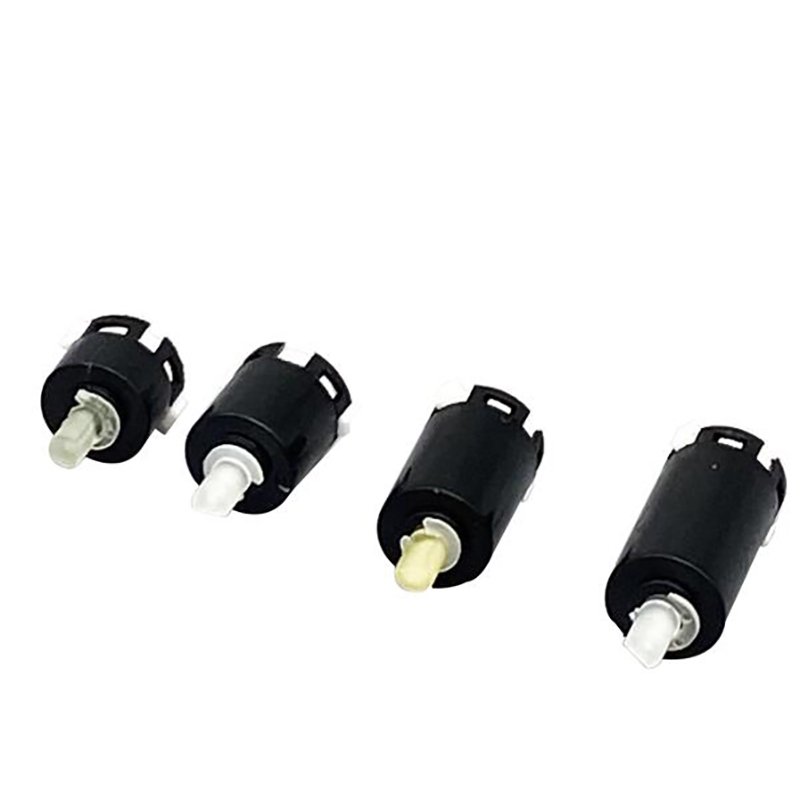
Speed Reduction
A gear mechanism in a brushless DC gear motor changes how fast the output shaft turns. The motor itself can spin very quickly, often at speeds between 2,000 and 3,000 revolutions per minute (rpm). Many machines do not need such high speeds. They need slower, controlled movement. The gear system solves this problem by reducing the speed.
Gearboxes use different reduction ratios. For example, a 20:1 ratio means the output shaft turns once for every 20 turns of the motor. This can lower the speed from 2,000 rpm to about 100 rpm. Some brushless DC gear motors offer reduction ratios from as low as 4 up to 1,296. This wide range lets engineers pick the right speed for each job.
Motor Model Size | Voltage Range | Reduction Ratio Range |
|---|---|---|
12 mm | 3-24V | 4 to 1296 |
16 mm | 3-24V | 4 to 1296 |
20 mm | 3-24V | 4 to 1296 |
22 mm | 3-24V | 4 to 1296 |
24 mm | 3-24V | 4 to 1296 |
28 mm | 3-24V | 4 to 1296 |
Customized | 12V | 1280 |
The gear mechanism also helps the motor work more efficiently. Most brushless DC gear motors have an efficiency between 70% and 90%. Some energy is lost as heat and friction inside the gearbox, but the system still works well for most uses.
Tip: Choosing the right gear ratio helps match the motor’s speed to the needs of the machine, saving energy and improving control.
Torque Increase
When the gear mechanism reduces speed, it also increases torque. Torque is the force that helps a motor turn heavy objects. The gear system multiplies the torque from the motor, making it strong enough for tough jobs.
The gears transfer motion from the motor shaft to the load.
Gearboxes multiply torque by using precise gear ratios.
Lower speed at the output means higher torque for lifting or moving heavy loads.
Precision gears help deliver the right amount of torque without losing control.
The system can adjust torque for each application, making the motor more flexible.
Commercial brushless DC gear motors can reach high torque levels. For example, a 5KW motor at 72V can deliver up to 34.2 Newton-meters (N.m) of torque. A 2.5KW motor at 48V can reach 24 N.m. This high torque is possible because the gear mechanism increases the force as it lowers the speed.
Potencia del motor | Tensión nominal | Rated Torque (N.m) | Maximum Torque (N.m) |
|---|---|---|---|
2.5 KW | 48V | 5.68 | 24 |
5 KW | 72V | 11.4 | 34.2 |
Note: The gear mechanism lets the motor handle heavy loads and work with great precision. This makes brushless DC gear motors a top choice for robots, conveyors, and other machines that need both strength and control.
Advantages and Applications
Efficiency and Longevity
Brushless DC gear motors are known for being efficient and lasting a long time. They use electronic control instead of brushes. This helps save energy and makes them run smoother. Brushless DC gear motors are usually 85% to 90% efficient. Brushed DC gear motors are only 75% to 80% efficient. The table below shows the difference:
Tipo de motor | Efficiency Range (%) |
|---|---|
Brushed DC Gear Motors | 75–80 |
Brushless DC Gear Motors | 85–90 |
Brushless DC gear motors can work for tens of thousands of hours. This is because they do not have brushes that wear out. Most brushless DC gear motors last about 1,000 hours or more. Brushed motors often last only 200 to 500 hours. The main reason is that brushes and commutators wear down fast in regular motors. This design means you do not need much maintenance. It also saves money over time.
Tip: Brushless DC gear motors can run for thousands of hours. They do not need to be replaced or fixed often. This makes them strong and a good value.
Common Uses
Many industries pick brushless DC gear motors because they are reliable and easy to control. These motors are good for jobs that need steady speed and strong force. They also run quietly. Some common uses are:
Automated commercial doors
Consumer electronics
Cordless power tools
Drones
Dental and medical tools
Electric vehicles
HVAC systems
Industrial automation
Printers and copiers
Portable electronic equipment
Industrial robots and automation equipment
The table below shows how different industries use these motors:
Industry / Sector | Example Applications / Uses |
|---|---|
Agriculture | Various agricultural machinery and equipment |
Food Processing | Food and beverage machinery, ice maker machines |
HVAC | Heating, ventilation, and air conditioning systems |
Industrial Equipment | Machine tool builders, mixers |
Manipulación de materiales | Conveyors, automated guided vehicles (AGVs/AMRs) |
Equipos médicos | Medical tools and equipment |
Packaging Equipment | Packaging machinery |
Refrigeration | Refrigeration systems |
Commercial Equipment | Car wash equipment, automated commercial doors |
Robotics and industrial automation are using more brushless DC gear motors. These fields need motors that can control speed and position very well. They also need motors that last a long time and do not need much care. The market for these motors is growing in Asia Pacific, North America, and Europe. Companies like brushless DC gear motors because they are efficient, small, and can work all the time.
A brushless DC gear motor has a brushless motor and a gear system. This setup makes the motor work well and last a long time. It also gives strong torque for its size. The table below lists the main benefits:
Ventaja | Explicación |
|---|---|
Higher Efficiency | Works at 85–90% efficiency, with less heat and noise |
Longer Lifespan | Can last up to 10,000 hours with little wear |
Low Maintenance | No brushes to change, so less downtime |
High Torque-to-Weight | Gives strong torque for how big it is |
Precise Speed Control | Keeps speed accurate for many jobs |
Funcionamiento silencioso | Makes less noise because of electric control |
These motors help factories, robots, and medical tools move smoothly and quietly. They also help machines work with exact motion. Market reports say brushless DC gear motors will keep growing in the next few years:

Brushless DC gear motors give steady and accurate control. They help save energy and need less fixing, so they are a smart pick for new machines.
PREGUNTAS FRECUENTES
What makes a brushless DC gear motor different from a brushed motor?
A brushless DC gear motor uses electronic control and permanent magnets. It does not have brushes. This design reduces friction and wear. The motor lasts longer and needs less maintenance.
How does the gear system help the motor?
The gear system lowers the speed and increases the torque. This lets the motor move heavy loads with more force. Engineers choose gear ratios to match the job.
Tip: High gear ratios give more torque for lifting. Low gear ratios give faster speed for quick moves.
Where do people use brushless DC gear motors?
People use these motors in robots, conveyor belts, medical tools, and automated doors. Factories pick them for jobs that need strong force and exact control.
Application | Example Use |
|---|---|
Robótica | Robot arms |
Productos sanitarios | Dental tools |
Automation | Conveyor systems |
Do brushless DC gear motors need much care?
Brushless DC gear motors need very little care. They do not have brushes that wear out. Most motors run for thousands of hours without stopping.
No brush changes
Less downtime
Lower repair costs
